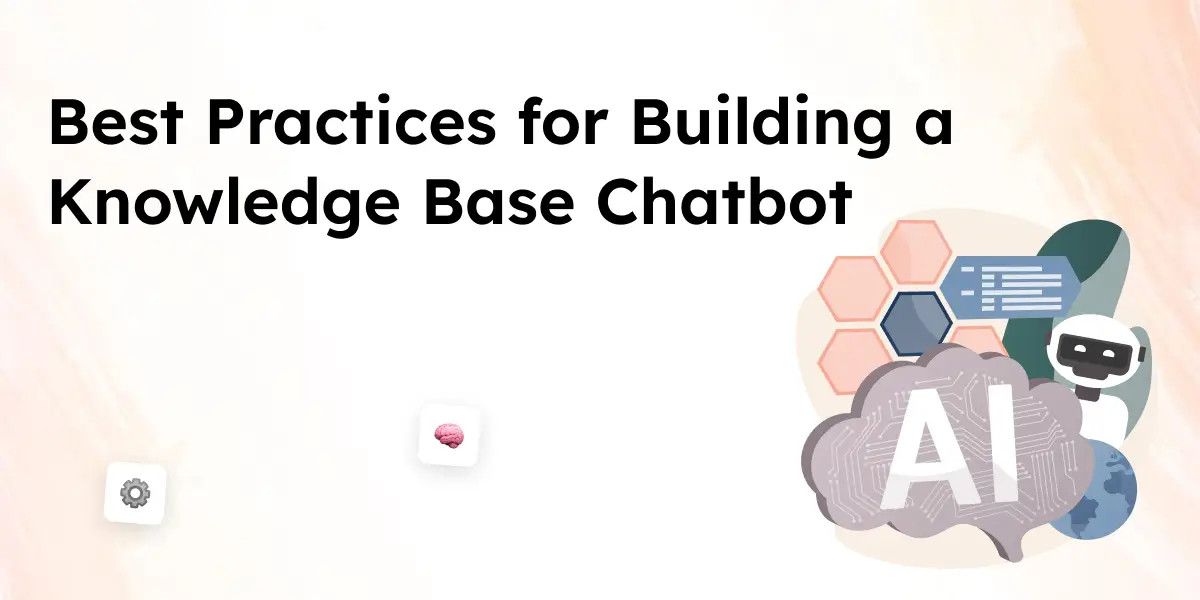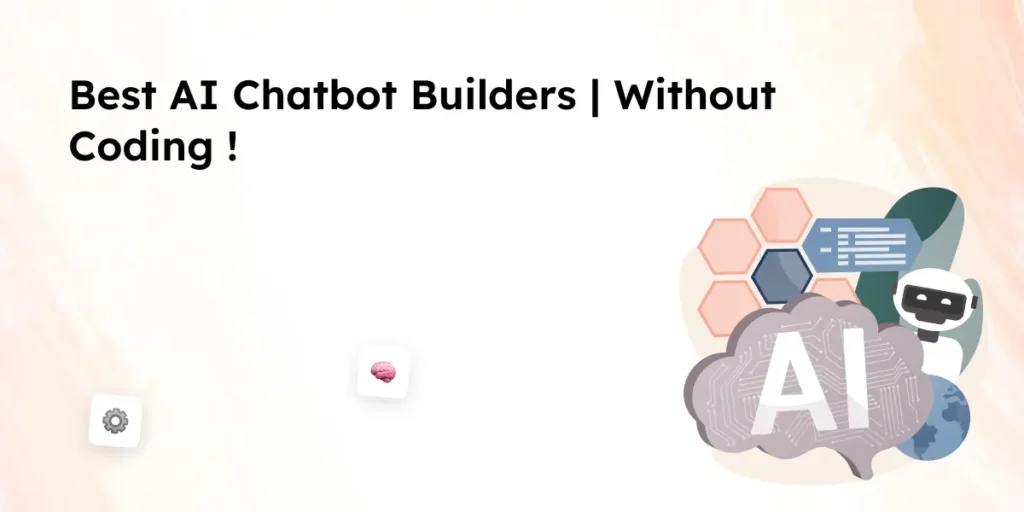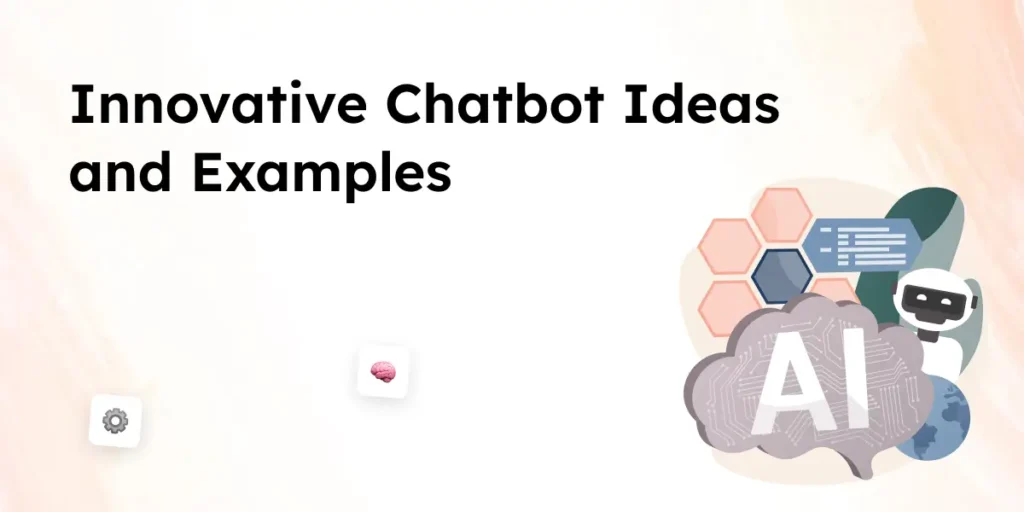A knowledge base chatbot improves customer support by answering frequently asked questions and reducing the workload on the support team. Businesses that use a knowledge base for ai-powered chatbots can manage customer interactions more efficiently. A knowledge base is an online resource that helps a chatbot platform find and deliver relevant answers quickly.
This guide covers six best practices for creating a chatbot that leverages ai knowledge base technology. It explains how to optimize knowledge base articles, improve chatbot responses, and enhance customer satisfaction. The article also highlights the limitations of knowledge base chatbots and ways to overcome them.
From understanding different types of chatbots to building a successful knowledge system, these insights will help integrate your chatbot into your support process. Whether you want to use chatbots for multilingual support or use chatgpt, these steps will make your chatbot more effective.
6 Tips for Building a Great Knowledge Base Chatbot
1. Define the Purpose of Your Knowledge Base Chatbot
A chatbot must have a clear purpose to be effective. Businesses should identify whether the chatbot will handle faqs, troubleshooting, or guided customer support. Selecting the right type of chatbot, such as rule-based chatbots, generative ai chatbots, or a hybrid chatbot, ensures it meets customer needs.
Key steps to define chatbot purpose
- Determine chatbot use cases and the type of chatbot needed.
- Ensure the chatbot connects to your knowledge base efficiently.
- Structure the knowledge base content to help the chatbot provide accurate responses.
- Use ai-powered knowledge base tools to keep chatbot responses relevant.
- Regularly update knowledge base articles to close the knowledge gap.
A chatbot that integrates with the knowledge base properly enhances customer satisfaction and improves the chatbot experience. Businesses should focus on making their chatbot more intuitive by refining how it processes and delivers information.
2. Build a Knowledge Base That Supports AI Chatbots
A chatbot is only as good as the knowledge source it pulls information from. A well-structured knowledge base for a chatbot ensures accurate and efficient responses. Businesses need to create a knowledge base that is easy for both the chatbot and users to navigate.
Best practices for building a strong knowledge base
- Organize the company’s knowledge base into clear categories and subcategories.
- Use a knowledge base software that supports ai capabilities for real-time updates.
- Structure knowledge base articles with concise answers to frequently asked questions.
- Keep information in the knowledge base clear and consistent to prevent confusion.
- Regularly update the knowledge base content to close any knowledge gap.
A comprehensive knowledge base helps a chatbot understand customer queries and provide relevant answers. Using ai-powered knowledge base tools ensures that responses based on the latest data are accurate. Integrating chatbot responses with a properly structured knowledge base improves the overall chatbot experience.
How chatbots use a knowledge base efficiently
- Chatbots help users find information quickly by searching through structured data.
- An ai knowledge base improves chatbot accuracy by reducing errors in responses.
- A chatbot uses predefined responses based on knowledge base content to assist users.
- Generative ai knowledge models like chatgpt can enhance chatbot performance by making responses more conversational.
Businesses should ensure their chatbot integrates with their knowledge base properly to maximize efficiency. Setting up a knowledge base correctly and keeping it updated will make the chatbot work better and improve customer satisfaction.
3. Train Your Chatbot with Conversational AI
A chatbot needs proper training to provide accurate and natural responses. Conversational ai allows chatbots to understand different ways users phrase their questions. Businesses should use ai-powered chatbots to create a smoother interaction experience.
How to train a chatbot with ai
- Use natural language processing to help the chatbot understand different types of user queries.
- Integrate your chatbot with an ai platform that supports machine learning.
- Train the chatbot with data from previous customer interactions and frequently asked questions.
- Use ai models like chatgpt to refine responses and improve conversational flow.
- Test chatbot responses based on real scenarios to ensure accuracy.
An ai chatbot should be able to answer questions effectively while maintaining a conversational tone. Businesses can use chatbots powered by advanced ai to improve customer interactions and automate common support requests.
4. Address the Limitations of Knowledge Base Chatbots
While ai-powered chatbot solutions improve customer support, they do have some challenges. The limitations of knowledge base chatbots can affect accuracy and user experience if not managed correctly.
Common chatbot limitations and how to fix them
- Lack of context – Chatbots work best when the knowledge base is structured properly to provide contextual answers.
- Static responses – Businesses should update the knowledge base regularly to ensure chatbot responses remain relevant.
- Integration challenges – A chatbot should be able to integrate with your knowledge base efficiently to avoid incorrect responses.
- Handling complex queries – A hybrid chatbot combines ai-powered responses with human support for complex issues.
A chatbot needs continuous improvements to keep up with changing customer needs. Updating the knowledge base and using ai tools help a chatbot provide more relevant information. A knowledge-based chatbot relies on key chatbot features to deliver relevant responses.
5. Optimize Chatbot Integration with Other Platforms
A chatbot should not work in isolation. Integrating chatbot technology with existing platforms like CRM, helpdesks, and ticketing systems helps improve efficiency. Businesses should ensure their chatbot connects to their knowledge base and external support tools smoothly.
Ways to integrate your chatbot for better performance
- Use a chatbot platform that supports multiple integrations.
- Ensure chatbot responses are based on real-time data from a connected knowledge base.
- Integrate with your knowledge base and external CRM tools for personalized support.
- Set up a knowledge base chatbot that allows seamless transitions to human agents when needed.
By optimizing chatbot integration, businesses can improve response accuracy and enhance the chatbot experience. Using ai-powered chatbots with connected platforms ensures customer satisfaction through efficient support.
6. Continuously Monitor and Improve Your Knowledge Base AI Bot
A chatbot needs regular improvements to stay effective. Monitoring chatbot interactions helps businesses find areas for enhancement and refine chatbot use cases.
Steps to improve chatbot performance over time
- Track chatbot interactions to identify common user queries.
- Update knowledge base articles regularly to close the knowledge gap.
- Use chatbots to gather customer feedback and improve chatbot responses.
- Optimize chatbot accuracy by refining ai-powered responses.
- Ensure your chatbot remains up to date with new industry trends.
Chatbots help users find information quickly, but they need regular updates to maintain efficiency. Businesses should focus on making their chatbot smarter by using ai-powered tools and improving the knowledge base content continuously.
Conclusion
A well-built knowledge base chatbot improves customer support by handling frequently asked questions and reducing the workload on the support team. Businesses that use knowledge base chatbots can streamline customer interactions and provide instant, accurate answers.
To ensure chatbot success, companies should define its purpose, build a structured knowledge base, train it with conversational ai, and address chatbot limitations. Integrating chatbot technology with existing platforms and continuously improving chatbot responses helps maintain efficiency.
A chatbot that connects to your knowledge base efficiently enhances customer satisfaction and ensures users find the information they need quickly. Businesses should focus on updating their knowledge base, refining chatbot accuracy, and optimizing chatbot use cases for better results.
Frequently Asked Questions (FAQs)
1. What is the best way to build a knowledge base for a chatbot?
The best way to build a knowledge base for a chatbot is to organize content into clear categories, write concise knowledge base articles, and use a knowledge base software that supports ai capabilities. Keeping the knowledge base updated ensures chatbot responses remain relevant and accurate.
2. How do ai chatbots use a knowledge base for better responses?
Ai chatbots use a knowledge base by retrieving information from structured knowledge base content. They process user queries using natural language processing and generate responses based on relevant knowledge base articles. An ai-powered chatbot improves accuracy by learning from past interactions and continuously refining its responses.
3. What are the key limitations of knowledge base chatbots?
Knowledge base chatbots have limitations such as difficulty handling complex queries, reliance on outdated knowledge base content, and integration challenges. Businesses can improve chatbot performance by regularly updating the knowledge base, using ai-powered tools, and implementing a hybrid chatbot that combines automation with human support.
4. How often should I update my knowledge base for a chatbot?
A knowledge base should be updated regularly to ensure chatbot responses remain accurate. Reviewing and updating knowledge base content based on customer feedback, chatbot interactions, and new business information helps maintain chatbot efficiency.



